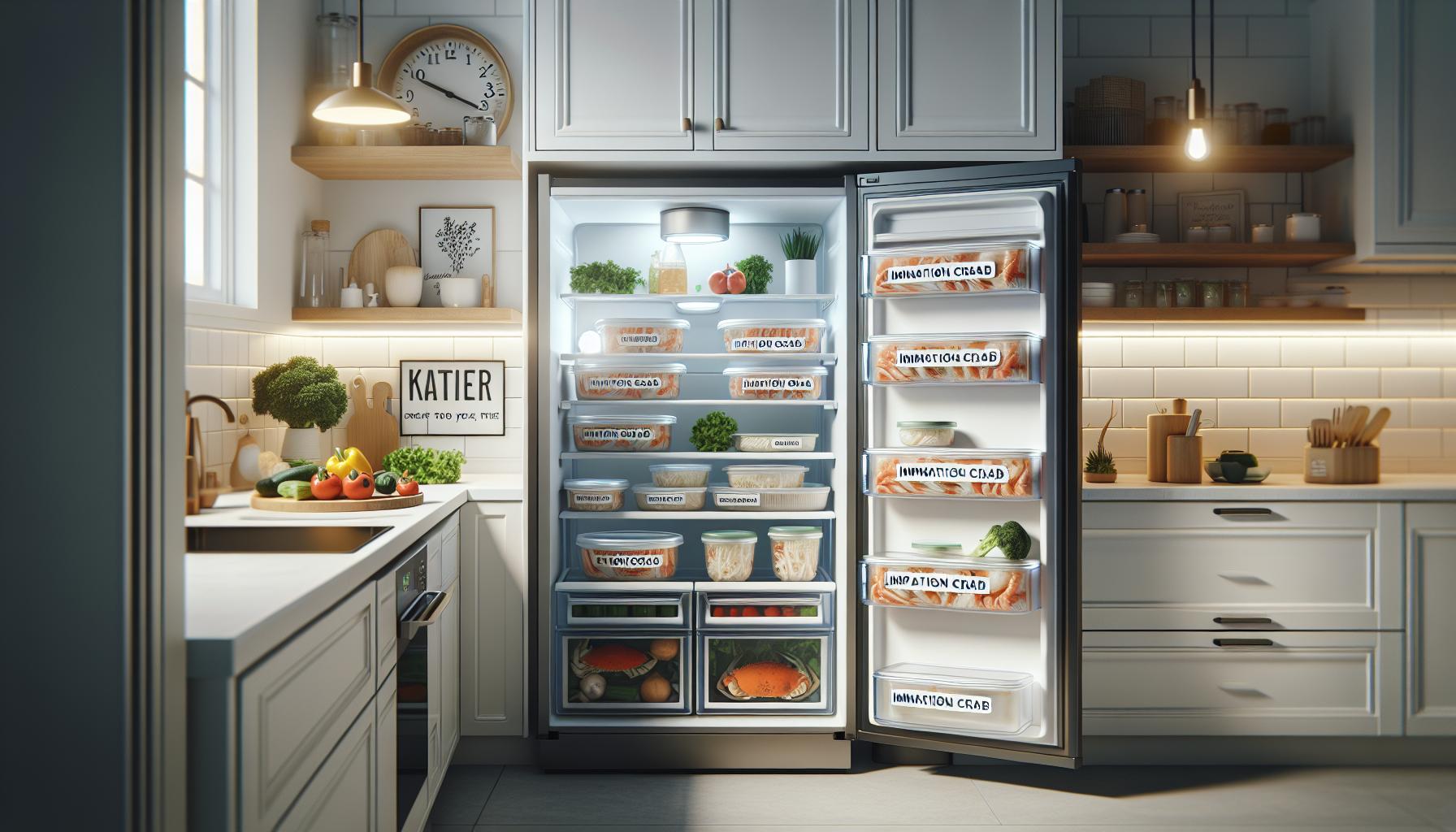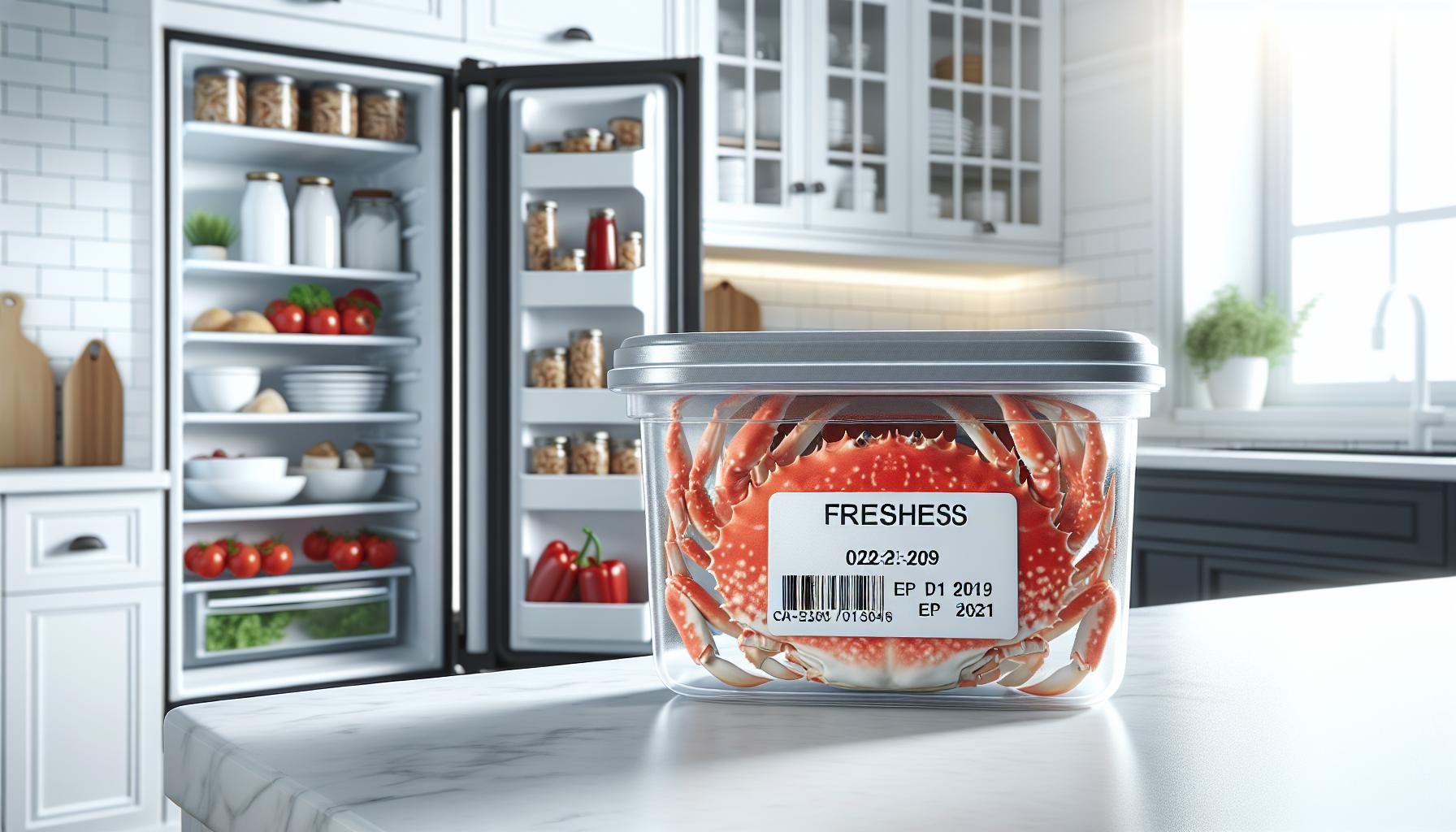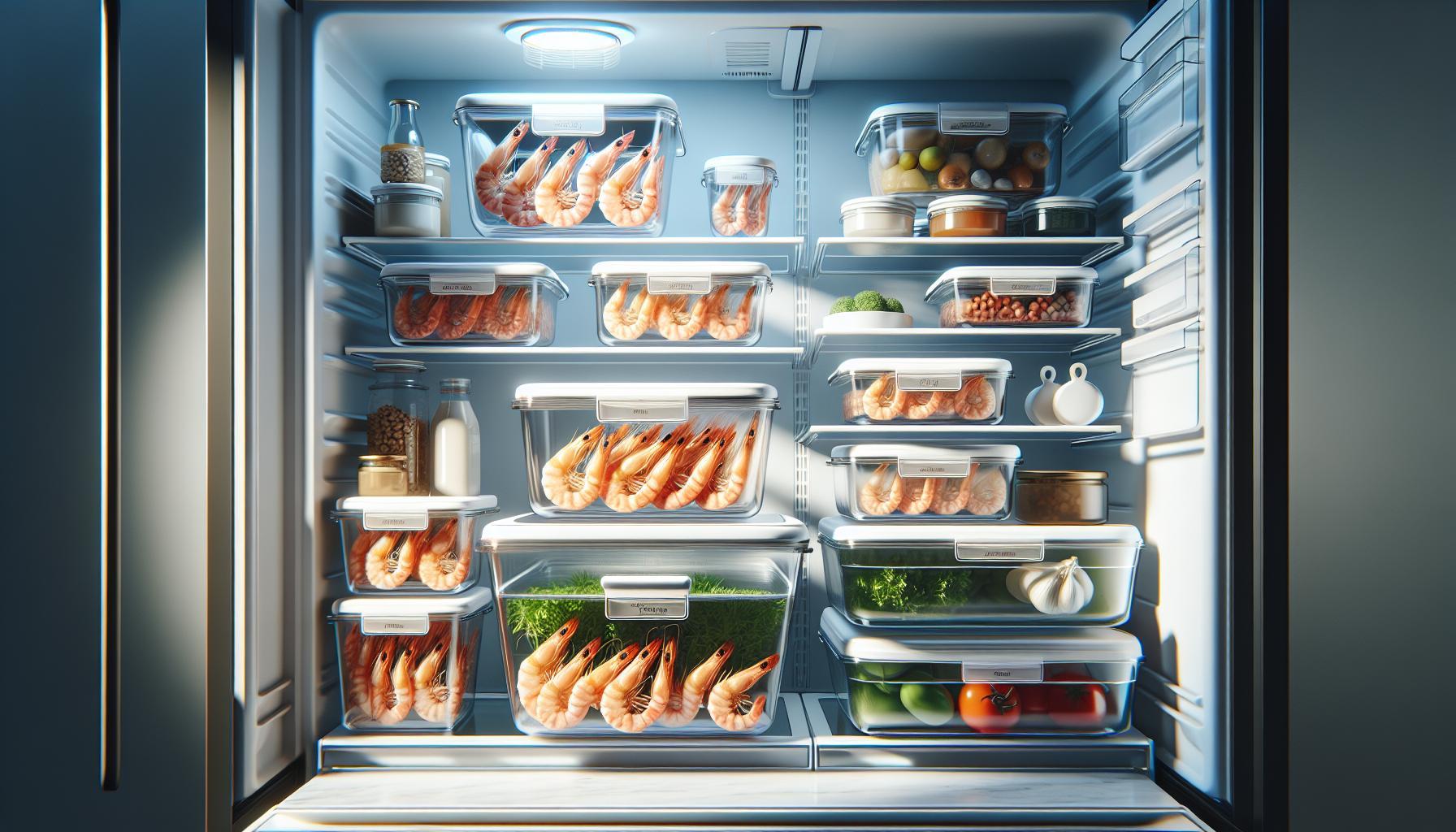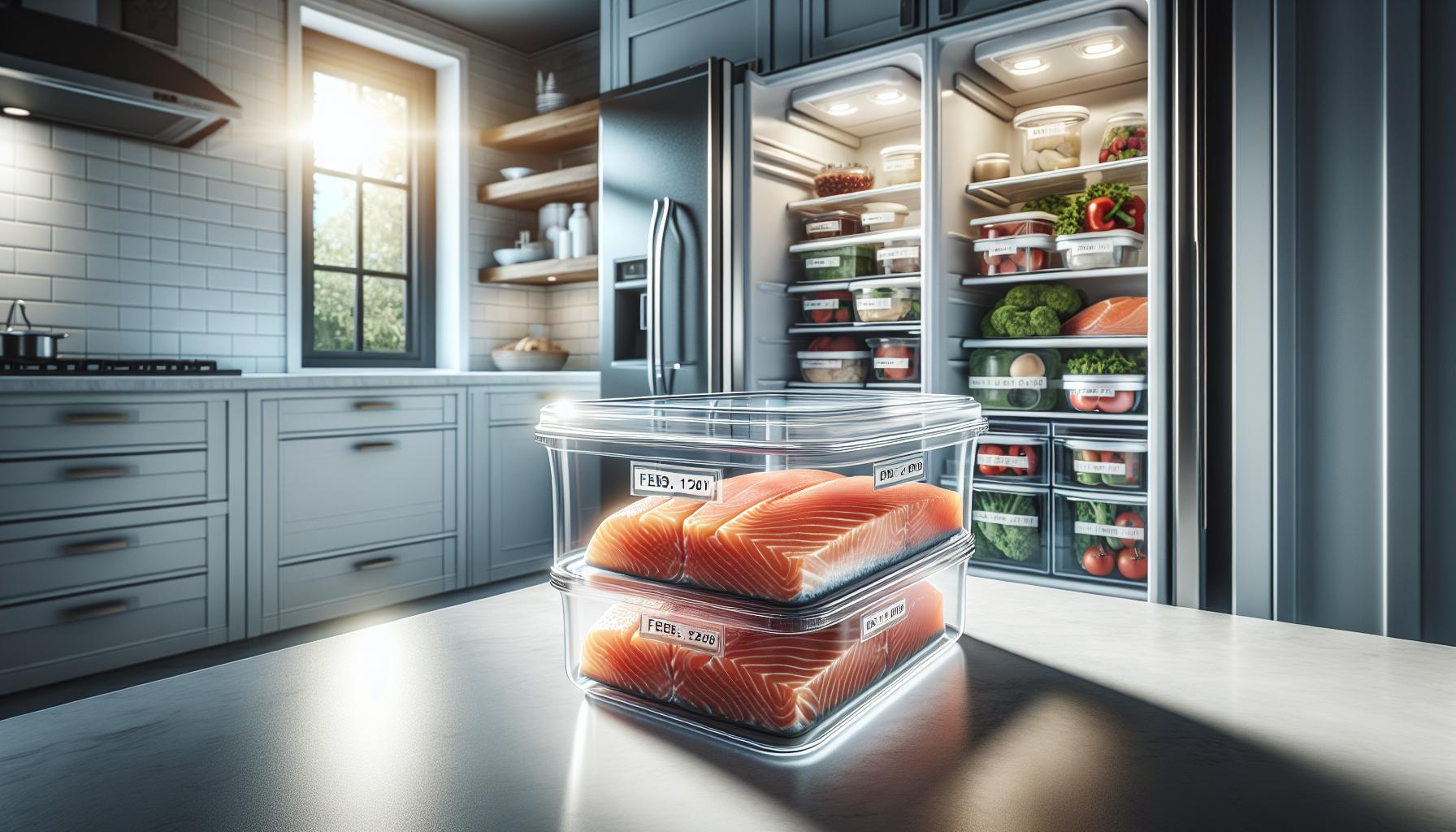Imitation crab, or surimi, is a popular seafood choice for its versatility and affordability. However, understanding how long it lasts in the fridge is crucial for ensuring safety and quality. Improper storage can lead to foodborne illnesses, which can turn a delicious meal into a harmful one.
Many people enjoy imitation crab in salads, sushi, and pasta, but how can you be sure you’re consuming it safely? Knowing the shelf life and storage tips can help you avoid waste and keep your meals enjoyable. In this guide, we’ll delve into the lifespan of imitation crab in the fridge, along with practical storage strategies to maintain its freshness. By following these guidelines, you can savor your favorite dishes with confidence.
How Long Does Imitation Crab Stay Fresh in the Fridge?
Imitation crab, often made from surimi (a fish-based protein), is a popular seafood substitute that adds flavor and texture to a variety of dishes. When it comes to freshness, properly storing imitation crab is crucial for both quality and safety. Unopened imitation crab can last in the refrigerator until the expiration date on the package, usually ranging from 3 to 6 months after purchase. Once opened, however, it’s essential to consume it within a shorter timeframe to ensure optimal freshness and safety.
Typically, opened imitation crab can remain fresh in the fridge for 3 to 5 days. To maximize its shelf life, always keep it tightly sealed in an airtight container or tightly wrapped in plastic wrap to prevent exposure to air, which can accelerate spoilage. If the imitation crab emits an off odor, has a slimy texture, or shows discoloration, it’s best to err on the side of caution and discard it.
To make sure that you are properly managing the freshness of imitation crab, consider labeling your storage container with the date you opened it. This simple step helps you track how long it has been in the fridge and ensures you enjoy it at its best quality. Always prioritize food safety by adhering to the recommended timeframes and storage practices to enjoy this delectable seafood alternative safely.
Understanding the Shelf Life of Imitation Crab
Imitation crab, made primarily from surimi, is a versatile seafood option that imitates the taste and texture of real crab. is crucial for ensuring both safety and quality when enjoyed in various dishes. The freshness of imitation crab largely depends on how it is stored and whether it has been opened or remains sealed.
Unopened imitation crab can typically last in your refrigerator until the expiration date on the package, which is often set for a range of 3 to 6 months post-purchase. Once you break that seal, however, the clock starts ticking. Opened imitation crab should ideally be consumed within 3 to 5 days for optimal taste and safety. To maintain its freshness during this period, it’s essential to store it properly. Always keep your imitation crab tightly sealed in an airtight container or securely wrapped in plastic wrap. This minimizes air exposure, which can hasten spoilage.
For those wanting to keep a close eye on their consumption, consider labeling your storage container with the date you opened it. This straightforward method can help ensure you enjoy your imitation crab before it reaches its prime. Remember, even under the best storage conditions, imitation crab can develop spoilage. Signs include an off odor, slimy texture, or discoloration-any of which warrant a trip to the trash can. By adhering to these guidelines, you can enjoy your imitation crab dishes safely and deliciously.
Best Practices for Storing Imitation Crab
To preserve the delightful taste and texture of imitation crab, proper storage is essential. This seafood alternative, derived primarily from surimi, remains fresh longer when handled with care. Here are some best practices to ensure your imitation crab stays safe and flavorful.
First, always check the packaging for storage instructions. Unopened imitation crab can typically last until the printed expiration date, which is usually 3 to 6 months after purchase. If you’ve already opened the package, consume the contents within 3 to 5 days for optimal quality. During this time, store the imitation crab in an airtight container or securely wrapped in plastic wrap to minimize air exposure and prevent spoilage.
Key Storage Tips
- Temperature Control: Keep your refrigerator at 40°F (4°C) or lower. A consistent, cool temperature helps prolong the lifespan of imitation crab.
- Sealing: After opening, tightly seal the container or wrap to limit exposure to air, which can promote spoilage.
- Labeling: Consider labeling your imitation crab with the date it was opened. This simple step helps you track freshness and ensures you’re consuming it within a safe timeframe.
Additionally, if you plan to save imitation crab for an extended period, freezing is a viable option. However, it’s best to use it within 6 months for maximum quality. When freezing, be sure the imitation crab is well-wrapped in freezer-safe packaging to avoid freezer burn. Always thaw in the refrigerator before using, never at room temperature, to maintain safety.
By following these best practices, you can enjoy your imitation crab dishes with confidence, knowing you’ve kept them as fresh and tasty as possible.
Recognizing Signs of Spoilage in Imitation Crab
Spoilage detection is crucial when it comes to ensuring the safety of your imitation crab. This seafood alternative, while convenient, can go bad if not stored properly. The first indicator of spoilage is its smell. Fresh imitation crab should have a mild ocean scent; if you notice a strong, sour, or ammonia-like odor, it’s a clear sign that it has spoiled and should be discarded.
Another physical cue is the texture. Imitation crab should be firm yet tender. If it becomes excessively slimy or mushy, it’s an indication that spoilage has begun. Visual inspection is also important; look for any discoloration, such as dark spots or an overall dullness that deviates from its typical coloration. If the crab meat appears off or has any signs of mold, it’s best to err on the side of caution and throw it away.
Lastly, pay attention to the packaging. If the vacuum-sealed packaging appears bloated or if there are tears or punctures, the imitation crab may have been compromised, which can lead to spoilage. Always remember, when in doubt, it’s safer to discard imitation crab that shows any signs of spoilage to avoid potential foodborne illnesses.
How to Properly Thaw Frozen Imitation Crab
To ensure that imitation crab retains its best flavor and texture after freezing, it is crucial to thaw it properly. The best method for thawing imitation crab is to move it from the freezer to the refrigerator, allowing it to melt gradually. This method can take several hours or overnight, depending on the amount you are thawing. By thawing in the fridge, the imitation crab remains within a safe temperature range, minimizing the risk of bacterial growth.
If you need to thaw imitation crab quickly, you can opt for the cold water method. Place the sealed package of imitation crab in a bowl of cold water, ensuring it is fully submerged. Change the water every 30 minutes to maintain a safe temperature. Typically, this method will take about 1 to 2 hours. Be cautious not to use warm water, as this can promote bacterial growth and compromise food safety.
Once thawed, it is advisable to consume imitation crab within 2 to 3 days if stored in the refrigerator. If you have thawed it using the cold water method, it’s best to cook and eat it immediately. Never refreeze imitation crab after it has been thawed, as this can significantly affect its quality and safety.
Always keep an eye on portion sizes as well; if you find yourself often with leftovers after a meal, consider thawing smaller amounts at a time. This will ensure that you enjoy the freshest taste and optimal safety of your imitation crab dishes.
Can You Freeze Imitation Crab? Tips and Tricks
Storing imitation crab properly can significantly extend its shelf life and maintain its delightful taste and texture. Freezing imitation crab is a viable option if you want to preserve it for longer periods. When done correctly, frozen imitation crab can last up to six months in the freezer while still retaining a reasonable quality. However, it’s essential to utilize the right methods to ensure the best results.
Before freezing, ensure that the imitation crab is fresh and within its expiration date. Packaging is key: place it in airtight containers or heavy-duty freezer bags, squeezing out as much air as possible to avoid freezer burn. Label the packaging with the date to keep track of storage time. If the imitation crab comes in its original packaging, you may want to wrap it in plastic wrap or aluminum foil to provide additional layers of protection.
Thawing Frozen Imitation Crab
When it comes time to use your frozen imitation crab, proper thawing is critical. The safest method is to transfer it from the freezer to the refrigerator, allowing it to thaw gradually over several hours or overnight. Thawing in the refrigerator keeps the crab at a safe temperature, minimizing the risk of bacterial growth. If you need to thaw it more quickly, submerging the sealed package in a bowl of cold water is another effective method-just remember to change the water every 30 minutes.
It’s important to never refreeze imitation crab that has already been thawed, as this can adversely impact flavor and texture. For best results, only thaw the amount you plan to consume within a few days, focusing on portion sizes to reduce waste. Remember that once thawed, imitation crab should be consumed within 2 to 3 days if stored in the refrigerator.
By following these straightforward tips and practices, you can enjoy imitation crab dishes at their best, without the hassle of spoilage or waste.
Safety Tips for Preparing Imitation Crab Dishes
When preparing imitation crab dishes, safety is paramount to ensure the health and enjoyment of your meal. Many may not realize that while imitation crab is convenient and versatile, it requires careful handling to prevent foodborne illnesses. Always start by checking the expiration date before using any product; imitation crab can usually be stored in the refrigerator for up to 3-5 days once opened if it is kept properly sealed. If you’re using a package that has been opened, make sure that it is refrigerated promptly after use to inhibit bacterial growth.
Handling and Cooking Imitation Crab
When handling imitation crab, wash your hands thoroughly before and after touching the seafood. This simple step can significantly reduce the risk of cross-contamination. Always use clean utensils and cutting boards dedicated to seafood, and avoid using the same ones for raw meat to prevent any harmful bacteria from transferring. If you choose to cook imitation crab, ensure that it reaches the appropriate internal temperature of 165°F (74°C) to eliminate any potential pathogens. You can easily check this using a food thermometer.
Storing Leftovers
If you have leftovers after preparing your imitation crab dish, store them in an airtight container and refrigerate them immediately. Properly stored, these leftovers should be consumed within 2-3 days. If you notice any changes in texture, such as a slimy surface, or an off smell, it’s best to discard the product to avoid health risks. Reheating leftovers should also be done until they are steaming hot throughout, ensuring any lurking bacteria are effectively killed off.
By following these guidelines, you can enjoy imitation crab dishes safely. Remember, a little attention to detail goes a long way in food preparation, helping you savor the delightful flavors of imitation crab without compromise.
How Long Can Cooked Imitation Crab Last?
Once cooked, imitation crab offers a delightful taste, but it’s essential to understand its proper storage to ensure safety and freshness. Generally, cooked imitation crab can safely last in the refrigerator for about 3 to 5 days when stored correctly. This timeframe allows you to enjoy the product while minimizing the risk of spoilage or foodborne illness.
To maximize the freshness of cooked imitation crab, it’s best to store it in an airtight container. This not only protects it from airborne contaminants but also helps retain its texture and flavor. Make sure to refrigerate the leftovers shortly after cooking to inhibit bacterial growth. If you plan to have your imitation crab leftovers for longer than this period, freezing is an option that can significantly extend its shelf life.
When reheating cooked imitation crab, aim to heat it until it’s steaming hot throughout, ensuring any potential bacteria are effectively killed. If you notice any unusual smells, a change in color, or a slimy texture, it’s a strong indicator that the crab should be discarded rather than consumed. Proper handling and storage can help you enjoy your imitation crab dishes safely, adding convenience and flavor to your meals.
Recipes That Use Leftover Imitation Crab
Leftover imitation crab is a versatile ingredient that can elevate a wide range of dishes while ensuring you minimize waste and maximize flavor. Whether you have a small amount left from a previous meal or a larger portion, integrating imitation crab into your cooking repertoire is both practical and delicious.
One popular option is to prepare a creamy imitation crab salad, perfect for sandwiches or as a stand-alone dish. Simply combine chopped imitation crab with mayonnaise, diced celery, a squeeze of lemon juice, and some seasoning of your choice, such as dill or Old Bay seasoning. Serve it on a bed of greens, in a lettuce wrap, or on your favorite bread for a light lunch that uses up your leftovers effectively.
For a quick and hearty dinner, consider making a seafood pasta. Sauté garlic in olive oil, add diced tomatoes, and then toss in the imitation crab along with some cooked pasta and fresh herbs, such as basil or parsley. This dish not only comes together in minutes but is also a delightful way to enjoy the delicate flavors of imitation crab while making it the star of your meal.
Another excellent use of leftover imitation crab is in a flavorful stir-fry. Combine the imitation crab with your choice of vegetables, such as bell peppers, snap peas, and carrots, and toss them in a savory sauce made of soy sauce, ginger, and garlic. Serve this over rice or noodles for a satisfying and colorful plate.
Always remember to check for freshness before using any leftover imitation crab. If it has been stored correctly, you can safely enjoy it within 3 to 5 days. Cooking with your leftovers not only prevents food waste but also allows you to explore new culinary possibilities, making your meals fun and varied.
Comparing Imitation Crab to Real Crab: Storage Differences
When examining the storage characteristics of imitation crab compared to real crab, it’s essential to note key differences that can impact freshness and safety. Imitation crab, primarily made from surimi (a processed fish product), is typically more stable when stored in the refrigerator. It can last for 3 to 5 days in the fridge after opening if properly sealed, whereas real crab, being a fresh seafood product, should be consumed within 1 to 3 days for optimal freshness and safety.
Storage Environment
Both forms of crab require cool storage conditions, but imitation crab is less sensitive to temperature fluctuations. Real crab should be stored at a consistent temperature below 40°F (4°C) and ideally in the coldest part of the fridge. In contrast, imitation crab can be stored in its original packaging or a tightly sealed container, providing a bit more leeway in handling and usage.
Freezing Practices
While both types of crab can be frozen for longer storage, there are some distinctions in the freezing process. Imitation crab can be frozen for up to 6 months, maintaining its flavor and texture well, while real crab can be frozen for about 3 months before the quality begins to diminish. Proper packaging in airtight containers or heavy-duty freezer bags is crucial for both to prevent freezer burn.
Indicators of Spoilage
Signs of spoilage also differ. With imitation crab, discoloration or a sour smell are indicators that it’s spoiled. For real crab, you should watch for a slimy texture or an off-putting odor, which signifies it is no longer safe to eat. Being vigilant about these signs can help minimize waste and enhance safety.
It’s crucial to understand these differences to maintain the quality and safety of both imitation and real crab. By implementing appropriate storage techniques specific to each type, you can enjoy the unique flavors they offer while ensuring they remain safe to eat.
Common Mistakes to Avoid When Storing Imitation Crab
Improper storage of imitation crab can lead to unnecessary spoilage, waste, and potential food safety issues. One common mistake is neglecting to check the expiration date. Always inspect the packaging before consumption; imitation crab often has a longer shelf life, but it’s best to consume it before the indicated date for optimal flavor and safety. After opening, imitation crab stored in the refrigerator should be consumed within 3 to 5 days. Sealing it tightly in its original packaging or transferring it to an airtight container can help maintain freshness during this period.
Another frequent error occurs when people leave imitation crab out at room temperature. Like most seafood products, imitation crab should not be left unrefrigerated for more than two hours. If left out longer, harmful bacteria can proliferate, increasing the risk of foodborne illness. To ensure safety, always return leftovers within this time frame and double-check that your fridge is operating at a safe temperature below 40°F (4°C).
Not freezing imitation crab when needed is also a misstep. While it’s perfectly safe to freeze imitation crab, many may hesitate to do so out of fear of ruining its texture. However, when packaged properly in airtight containers or heavy-duty freezer bags, imitation crab can last for up to six months in the freezer. Just be sure to label and date your packages to keep track of storage times. When ready to use, thaw it in the refrigerator for a safe and effective method of preserving texture and flavor.
Lastly, improper handling after thawing can lead to spoilage. Once imitation crab is thawed, it should not be refrozen-doing so can compromise its quality and safety. Portion out what you plan to use, and keep any remaining product refrigerated, adhering to the 3 to 5-day rule once thawed. By avoiding these common mistakes, you can enhance your safety and enjoyment when using imitation crab in your dishes.
Faq
Q: How can I tell if imitation crab has gone bad?
A: You can tell if imitation crab has gone bad by checking for off smells, a change in color, or a slimy texture. If it looks or smells unusual, it’s best to discard it. Refer to the section on “Recognizing Signs of Spoilage in Imitation Crab” for more details.
Q: What is the best way to store opened imitation crab?
A: The best way to store opened imitation crab is in an airtight container in the refrigerator. It should be consumed within 3 to 5 days to ensure maximum freshness. You can find more information in the “Best Practices for Storing Imitation Crab” section.
Q: Can I use imitation crab after the expiration date?
A: It’s not advisable to use imitation crab after the expiration date. Always check for signs of spoilage first, and if you’re ever in doubt, it’s safer to throw it away. For detailed guidance, see the “Understanding the Shelf Life of Imitation Crab” section.
Q: How can I reheat imitation crab safely?
A: To reheat imitation crab safely, microwave it on low power or steam it until warmed through, typically for 1-2 minutes. Avoid overheating, as it can affect the texture. Check out “Safety Tips for Preparing Imitation Crab Dishes” for more tips.
Q: Is it safe to eat imitation crab cold?
A: Yes, it is safe to eat imitation crab cold as it is typically pre-cooked. Ensure it’s stored properly and within its freshness period for the best taste. For more information, look into “How Long Does Imitation Crab Stay Fresh in the Fridge?”
Q: How should I defrost frozen imitation crab?
A: The best way to defrost frozen imitation crab is to place it in the refrigerator overnight. Alternatively, you can defrost it under cold running water for quicker results. Refer to “How to Properly Thaw Frozen Imitation Crab” for step-by-step instructions.
Q: How long can imitation crab be left out at room temperature?
A: Imitation crab should not be left out at room temperature for more than 2 hours. If it’s warm, discard it immediately to avoid foodborne illness. For storage guidelines, check the “Best Practices for Storing Imitation Crab” section.
Q: How should I dispose of imitation crab that has spoiled?
A: You should dispose of spoiled imitation crab in a sealed bag to prevent odors and contamination. Follow local regulations for food disposal, and ensure your trash bin is secured. For more on spoilage, see “Recognizing Signs of Spoilage in Imitation Crab.”
The Way Forward
Now that you’re equipped with essential tips on how long imitation crab lasts in the fridge, it’s crucial to store it properly to maximize its freshness and safety. Remember, unopened imitation crab can last up to 3-5 days past the “best by” date, while opened varieties should ideally be consumed within 3 days. Don’t risk your health-check your fridge regularly!
For further insights, explore our guides on food safety practices and how to identify spoiled seafood. If you found this information helpful, consider subscribing to our newsletter for more expert tips directly in your inbox. Share your thoughts or questions in the comments below; your experience could help others! For additional resources on safe food storage, visit our complete storage guide. Let’s keep your kitchen safe and your meals delicious!





